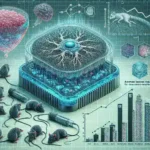Introduction
When it comes to graphic design and digital art, Adobe Photoshop stands out as one of the most powerful tools available. However, to harness its full potential, you need a Windows PC that meets specific hardware requirements. This article will guide you through the essential specs for a Photoshop-focused Windows PC, ensuring you get the best performance and efficiency for your creative endeavors.
Understanding the Basics
Before diving into the specifications, it’s important to understand how Photoshop utilizes system resources. Photoshop is a resource-intensive application that requires a balance of CPU power, RAM, storage speed, and graphics capability. Each of these components plays a crucial role in how smoothly the application runs and how quickly you can execute tasks.
1. Processor (CPU)
The processor is the brain of your computer, and for Photoshop, a powerful CPU is essential. Photoshop can utilize multiple cores for certain tasks, so a multi-core processor will enhance performance. Here are some key points to consider:
- Recommended: Intel Core i7 or AMD Ryzen 7 (or higher)
- Minimum: Intel Core i5 or AMD Ryzen 5
- Clock speed should ideally be 3.0 GHz or higher for optimal performance.
2. Memory (RAM)
RAM is crucial for multitasking and managing large files. The more RAM your PC has, the more efficiently Photoshop can run, especially when handling complex projects with multiple layers and filters.
- Recommended: 16 GB or more
- Minimum: 8 GB
- If your budget allows, aim for 32 GB for future-proofing and intensive projects.
3. Storage
Storage type and speed significantly impact the performance of Photoshop. You have two primary options: HDD (Hard Disk Drive) and SSD (Solid State Drive). SSDs are faster and more reliable, making them the preferred choice for Photoshop users.
- Recommended: 1 TB SSD or larger
- Minimum: 512 GB SSD
- Consider using an additional HDD for storing large files and backups.
4. Graphics Card (GPU)
The graphics card plays a vital role in rendering images and processing graphics. For tasks such as 3D rendering and GPU-accelerated features, a capable GPU is necessary.
- Recommended: NVIDIA GeForce RTX 3060 or AMD Radeon RX 6700 XT (or higher)
- Minimum: NVIDIA GeForce GTX 1660 or AMD Radeon RX 5500 XT
- Ensure your GPU has at least 4 GB of VRAM for optimal performance.
5. Display
While not a component of the PC itself, the display is crucial for graphic design. A high-resolution monitor with accurate color representation is vital for editing images in Photoshop.
- Recommended: 27-inch 4K monitor with 100% sRGB color gamut
- Minimum: 24-inch Full HD monitor
- Consider a monitor that supports calibration for precise color management.
Future-Proofing Your Build
Investing in a robust PC now means you won’t have to upgrade as frequently. Here are some tips to future-proof your Photoshop-focused Windows PC:
- Choose a motherboard that supports future CPU upgrades.
- Opt for higher RAM capacity and use dual-channel memory for better performance.
- Consider an external GPU for additional graphics power when needed.
Conclusion
Building or buying a Photoshop-focused Windows PC doesn’t have to be overwhelming. By focusing on the essential specifications—processor, memory, storage, graphics card, and display—you can create a powerful machine that meets your creative needs. Remember, investing in quality components will pay off in performance and longevity, allowing you to focus on what you love: creating stunning visuals with Adobe Photoshop.


